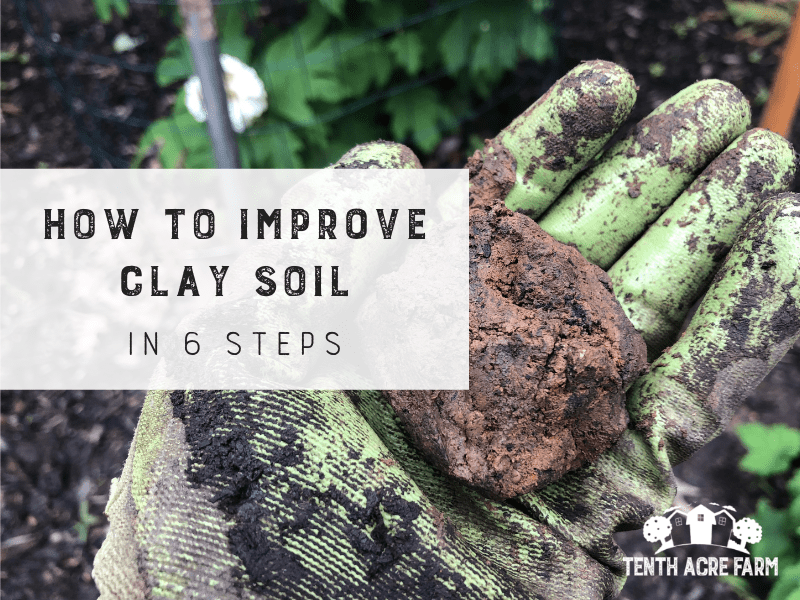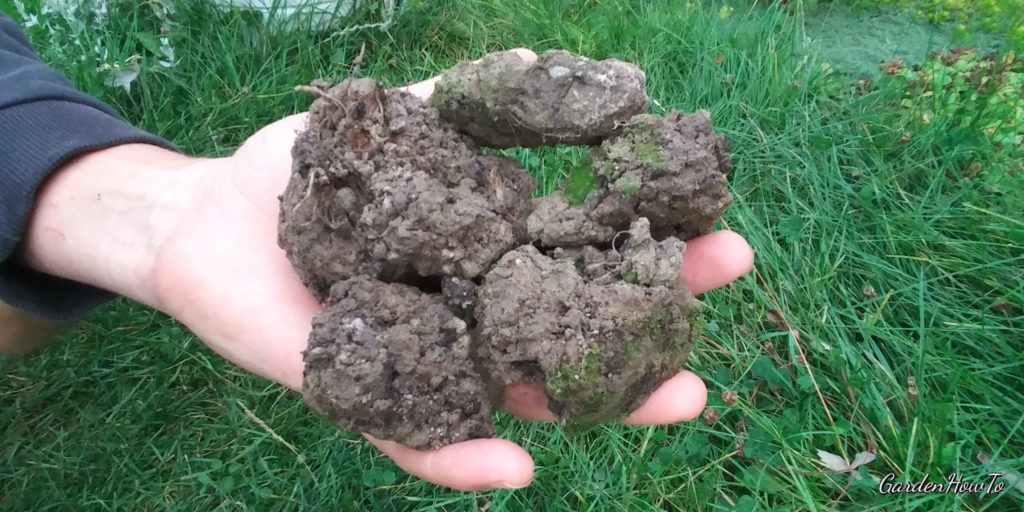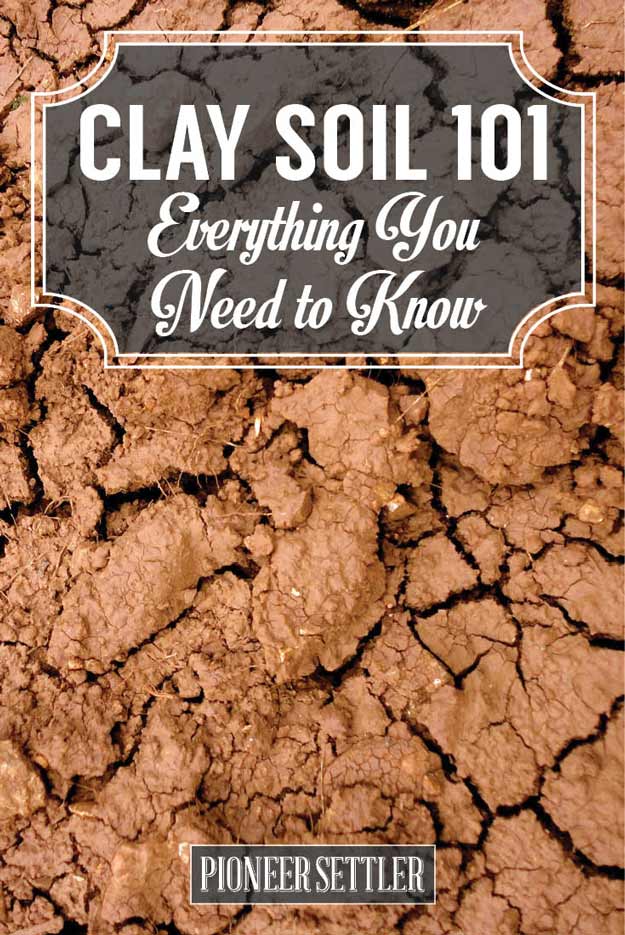The top 8-10 inches of soil, where plants' roots live, determine the success of your gardening efforts. An ideal soil from a plant's perspective is 50% soil matter and 50% open, or pore space (which should be half-filled with water and half left open for air). Clay soil, and soil near recent construction, is often too compact to allow roots to "breath." Adding organic matter to the soil lightens soil structure (also called "tilth").
Soil structure is how the individual clay, silt, and sand particles are arranged, and is impacted by factors such as organic matter. Clay without organic matter is like a flattened deck of playing cards. Adding organic material jumbles the cards, permitting water and oxygen to enter the soil. Regularly spreading organic matter over the soil surface is the best long-term solution to soil compaction. Organic matter includes compost, shredded leaf mulch, wood chips, straw and chopped leaves.
Apply a 3- to 4-inch layer of compost or a layer of wood chips or shredded leaf mulch 2 to 3 inches deep over bare soil in flower beds. Without any further help, soil organisms will incorporate the organic matter and begin to open up the soil. If you'd like to quickly break up a hard soil surface for planting, mix the organic matter into the top 3 to 6 inches of soil with a spade.
To help soften hard soil in a vegetable garden, add a 2-inch layer of compost twice a year and mix it into the top 2 inches of soil. If the soil in your garden or vegetable patch is bare over winter, spread a layer of mulch over it to protect it from heavy rainfall. Along with adding compost, a second strategy for adding organic matter to my clay soil is cover cropping. I plant cover crops any time the beds in my garden would otherwise be unplanted or fallow. Fallow periods provide little additional organic biomass while allowing the decomposition of organic matter in the soil to continue. They contribute to the improvements in soil structure that I described earlier.
And they can smother weeds and even suppress weed seed germination. Many cover crops will also suppress pathogenic nematodes, for example root knot nematode. Cover crops, also called green manure crops, help loosen clay or compacted soils with their roots and by adding organic matter.
They also prevent nutrient loss and erosion during the non-growing season. Leguminous cover crops, such as winter rye, alfalfa, hairy vetch and clover, which add nitrogen to the soil, are usually planted at the end of summer or early fall. Soil amendments are materials that are worked into the top several inches of soil, to improve drainage and loosen the soil where plants grow.
Organic soil amendments can make a world of difference in heavy clay soils. Organic matter breaks down fast in our warm climate, so beds will need regular additions of soil amendments to maintain good soil structure and fertility. Weighty gardening equipment, foot traffic and heavy downpours cause soil compaction, and clay and loam soils are most susceptible. However, even sandy soils can harden when compressed by heavy equipment.
Excessive weight and rain close the open pores between the soil particles; as a result, the soil hardens. Clay soils often drain very slowly after rainfall, and then they harden and crack when the weather turns dry and warm. To avoid compacting soil, create paths to avoid walking on growing areas. Don't dig the soil excessively or when it's wet, and don't mix sand into clay soil, which makes it like concrete. Use a spade to add about 2-3 inches of organic matter into the topsoil.
Compost, animal manure, and peat moss not only improve the soil's moisture retention but they also attract worms that help water flow through the soil. If you're dealing with heavy clay soil, use a mixture of sand and organic material to reduce waterlogging. Compaction is most likely to occur with heavier soils like clay and loam, but when heavy equipment is used, sandy soils can become compacted. These are soil particles that are packed closely together.
The problem may be compounded by events that have happened to the soil over the course of years. The pore spaces are reduced to the point that air and water cannot move freely and plant roots cannot grow easily into the surrounding soil. The soil could remain overly wet longer than is healthy for the plants growing there. At the opposite end of the scale from sandy soil are clay soils. These hold water and nutrients very well but don't drain as well as sandy soils, especially if compacted, a common situation for lawns with a clay soil base. I always see things on how to work with sandy, silty, or clay soils, practically nothing on peat soils.
I moved to an area this last Fall, that had a lot of glacier activity and is a meadow or grass land now. We would like to grow a garden, but we have black peat soil for about 14 feet down. I used a home soil test and found no nitrogen in the soil. There is some phosphorus and a small amount of potassium.
What should we do to our soil to be able to grow a vegetable garden and fruit trees? However, major losses in soil organic matter content can take place when the soil is inverted or mixed annually by tillage. Extensive tillage stimulates microbial activity , and the consumption of mass quantities of organic matter ensues. After your clay soil becomes more friable and you have provided a deep root zone for your garden plants, you should consider reducing tillage. Because the soil remains undisturbed, fertilizers and other soil amendments do not become homogenized in the tillage layer.
Plant feeder roots, therefore, tend to proliferate in the top 2 inches of fertile topsoil. Organic matter such as manure helps sandy soil to retain moisture and nutrientsOrganic matter is a kind of cure-all in the garden. Any organic matter will work to build soil structure and its ability to hold onto water.
Compost and manure are preferred because they are rich in nutrients, which they drip-feed to your plants. Over time, they'll also help to increase the pH of acidic sandy soils. Good soil provides just the right space between its particles to hold air that plants will use.
Silty and heavy clay soils have small particles that are close together. Sandy soils have the opposite problem; their particles are too big and spaced out. The excessive amount of air in sandy soil leads to rapid decomposition of organic matter. Cover crops help break up hard soils with their roots and by adding plant matter to the soil. Sow cover crops when the soil is bare, such as over winter. Before planting the area with desired plants in spring, dig up the cover crop and bury the plants in the soil.
Cover crops include buckwheat , cereal rye and crimson clover , which are annual plants that naturally die down at the end of their growing seasons. Department of Agriculture plant hardiness zones 10 through 12, and cereal rye is hardy in USDA zones 3 through 7. Crimson clover is a winter annual in USDA zones 6 through 9 and a summer annual in zones 3 through 4. Peat moss and sand are NOT recommended for improving clay soil, and purchased topsoil is frequently no better than your existing soil. Purchased topsoil is useful for creating raised beds, but for most landscaping needs, it is better to amend the existing soil with organic materials. If you do bring in topsoil, be sure to mix it thoroughly with the native soil.
If new soil is just spread over clay, plants will not root into the clay, and the plants will dry out in hot weather. Be aware that unsterilized topsoil may contain weed seeds. During the initial, pre-garden phase of my soil improvement plan, I managed to break up 10 inches of hard-packed clay with endless swings of my trusty mattock. I spread compost over the surface of the beds an inch at a time and rototilled it in.
I tried to work the compost deep into the soil, and along with it, I added lime and phosphorus, the clay soil in my garden needing both. When surface-applied, neither of these materials moves down through the soil, so incorporation to ample depth is very important to permit roots to grow into the subsoil. After 3 to 4 inches of compost, I had the "raised bed" I wanted. Mulching – Clay soils can tend to speed water runoff because water isn't absorbed as quickly into clay soils as it is other soils.
Clay soils also tends to stick to the bottoms of your shoes, which can make a mess when you go indoors. By adding a layer of mulch to clay soil, you not only help keep the house clean, but can reduce the number of weeds that sprout. As mulch decomposes,it will enhance nutrition and water retention, which ultimately allows for better plant growth. Mulch will slow down water run-off allowing clay soil more time to absorb, and store, water.
A layer of mulch is also cooler than exposed soil which helps to reduce temperatures overall in the garden. Compost is decomposed organic matter, and it is the best thing you use to improve the health of garden soil. Gypsum is easily applied to the soil surface with a regular lawn spreader.
It's an ideal amendment for improving soil structure and relieving compaction in existing lawns and gardens. Chop over-wintered cover crops directly into spring soils a few weeks before planting. During the growing season, sow a quick-growing cover crop, such as buckwheat, to fill the gap between spring and fall crops.
When it's time to plant, pull the buckwheat cover and use it as a mulch for fall garden beds. Organic matter in soil serves as food for earthworms, insects, bacteria and fungi-they transform it to soil nutrients and humus. Through this decomposition process, materials are made available as foods to growing plants. In finely textured clay soils, organic material creates aggregates of the soil particles, improving drainage and making it easier to work. Earthworms are especially helpful in making and keeping soil porous and well draining, said Brewer.
This relates to how the different soil particles are arranged, the aggregates they form and the spaces between them. Well-structured soil will also have plenty of air spaces to provide oxygen, allow water to penetrate and facilitate drainage. Poorly structured soils are often hard and compacted, don't accept water easily, have few air spaces and are subject to erosion. In simple terms they're bad news for you and your lawn and need to be improved. Next, gently squeeze the ball to lengthen it into a strip or 'ribbon' and see how long you can make it before it starts to break up.
The more clay it contains, the longer the ribbon will get and the more plastic it will feel to the touch. Soil ribbons can range in length from about 5mm – 75mm, with sandy soils being shortest, loamy soils in the middle and clay soils the longest. While soils that contain a lot of clay or sand may need work to improve them, loamy soils are generally ideal. These contain a mixture of sand, silt, organic matter and clay, providing the right balance of nutrients, oxygen, water and drainage which are just what your lawn needs.
Organic soil is rich in humus, the end result of decaying materials such as leaves, grass clippings and compost. Good organic garden soil is loose and fluffy — filled with air that plant roots need — and it has plenty of minerals essential for vigorous plant growth. It is alive with living organisms — from earthworms to fungi and bacteria — that help maintain the quality of the soil. Proper pH is also an essential characteristic of healthy soil.
Common soil amendments include compost, grass clippings, straw, shredded leaves, rotted manure and dried seaweed. To fix compacted soil, which is soil that has little to no air space, break it up to make it hospitable for your plants again. Start by shifting livestock, machinery, vehicles, and foot traffic away from the compacted area to give the soil a rest.
If you use the compacted area for farming or gardening, move your plants somewhere else for at least 1 growing cycle. Instead, plant a cover crop, like winter wheat or ryegrass, to allow the roots to break up the soil. For smaller, grassy areas that are compacted, use a small metal garden fork to poke holes in the soil so air, water, and roots can enter the area. However, when tackling a larger area, use a rototiller with an aeration attachment. Adding organic matter is the key to loosening hard soils.
The mineral particles in hard soils are pressed closely together, leaving little room for the air and water that plants need. Earthworms and other soil organisms draw the compost, leaf mulch or other matter down below the surface, breaking up the compacted particles. You can lightly dig organic matter into the top few inches of soil to help speed up the process. A 3-4 inch thick layer of mulch on top of your garden will benefit the soil in many ways. Many local landscape supply centers can easily deliver mulch to your house after taking an order over the phone or online, providing contactless delivery.
Following any of these treatments applying 6X in early spring gets your garden off to the perfect start for the season. 6X is a well-known and well-loved alternative to traditional farmyard manure which takes a lot of the effort out of spreading manure on the garden. One 15kg sack is equivalent to six or more sacks of traditional bagged farmyard manure and treats up to 184 sq metres . Clay's potential as one of the best soil types for plant growth lies in its unique properties.
Managed well, clay soil typically requires less irrigation and less fertilizer, and leads to healthier plants all around. In a garden bed, the best way to introduce organic material without digging , is to apply layers on top and let nature do the work for you. Simply pile your garden bed high with organic material – it can be wood chips, shredded paper, straw, chopped leaves, lawn clippings – whatever you can lay your hands on. It might be slow, but the wait will give you time to get to know your land before you plant. Bark, sawdust, manure, leaf mold, compost and peat moss are among the organic amendments commonly used to improve clay soil. Two or three inches of organic materials should be spread and rototilled, forked or dug into the top six or seven inches of your garden beds.






















No comments:
Post a Comment
Note: Only a member of this blog may post a comment.